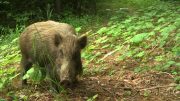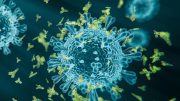
Evolution is the process by which species of living organisms change over time. It is a central concept in the field of biology and is considered to be one of the most important scientific theories of all time.
The European mole, equipped with its formidable digging shovels, can effortlessly tunnel through the earth. The same holds true for the Australian marsupial mole. Despite residing in vastly different regions, the two species have evolved similar appendages, which are perfectly suited for their subterranean lifestyle.
Science speaks of “convergent evolution” in such cases, when animal, but also plant species independently develop features that have the same shape and function. There are many examples of this: Fish, for example, have fins, as do whales, although they are mammals. Birds and bats have wings, and when it comes to using poisonous substances to defend themselves against attackers, many creatures, from jellyfish to scorpions to insects, have all evolved the same instrument: the venomous sting.
Identical characteristics despite lack of relationship
It is clear that scientists around the world are interested in finding out which changes in the genetic material of the respective species are responsible for the fact that identical characteristics have evolved in them, even though there is no relationship between them.
The search for this is proving difficult: “Such traits – we speak of phenotypes – are of course always encoded in genome sequences,” says plant physiologist Dr. Kenji Fukushima of the Julius-Maximilians-Universität (JMU) Würzburg. Mutations – changes in the genetic material – can be the triggers for the development of new traits.
However, genetic changes rarely lead to phenotypic evolution because the underlying mutations are largely random and neutral. Thus, a tremendous amount of mutations accumulate over the extreme time scale at which evolutionary processes occur, making the detection of phenotypically important changes extremely difficult.
A novel metric of molecular evolution
Now, Fukushima and his colleague David D. Pollock of the University of Colorado (USA) have succeeded in developing a method that achieves significantly better results than previously used methods in the search for the genetic basis of phenotypic traits. They present their approach in the journal Nature Ecology & Evolution.
“We have developed a novel metric of molecular evolution that can accurately represent the rate of convergent evolution in protein-coding DNA sequences,” says Fukushima, describing the main result of the now-published work. This new method, he says, can reveal which genetic changes are associated with the phenotypes of organisms on an evolutionary time scale of hundreds of millions of years. It thus offers the possibility of expanding our understanding of how changes in DNA lead to phenotypic innovations that give rise to a great diversity of species.
A tremendous treasure trove of data as a basis
A key development in the life sciences forms the basis of Fukushima’s and Pollock’s work: the fact that in recent years more and more genome sequences of many living organisms across the diversity of species have been decoded and thus made accessible for analysis. “This has made it possible to study the interrelationships of genotypes and phenotypes on a large scale at a macroevolutionary level,” Fukushima says.
However, because many molecular changes are nearly neutral and do not affect any traits, there is often a risk of “false-positive convergence” when interpreting the data – that is, the result predicts a correlation between a mutation and a particular trait that does not actually exist. In addition, methodological biases could also be responsible for such false-positive convergences.
Correlations over millions of years
“To overcome this problem, we expanded the framework and developed a new metric that measures the error-adjusted convergence rate of protein evolution,” Fukushima explains. This, he says, makes it possible to distinguish natural selection from genetic noise and phylogenetic errors in simulations and real-world examples. Enhanced with a heuristic algorithm, the approach enables bidirectional searches for genotype-phenotype associations, even in lineages that have diverged over hundreds of millions of years, he says.
The two scientists analyzed more than 20 million branch combinations in vertebrate genes to examine how well the metric they developed works. In a next step, they plan to apply this method to carnivorous plants. The goal is to decipher the genetic basis that is partly responsible for these plants’ ability to attract, capture and digest prey.
Reference: “Detecting macroevolutionary genotype–phenotype associations using error-corrected rates of protein convergence” by Kenji Fukushima and David D. Pollock, 5 January 2023, Nature Ecology & Evolution.
DOI: 10.1038/s41559-022-01932-7









Be the first to comment on "How Evolution Works – Scientists Develop a Novel Metric of Molecular Evolution"